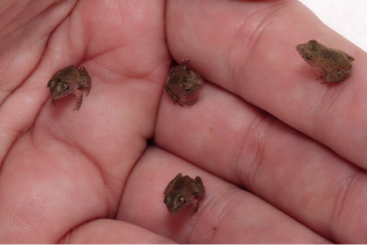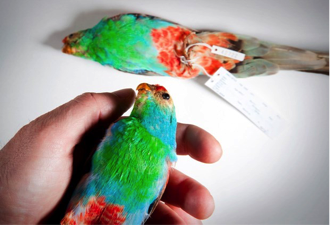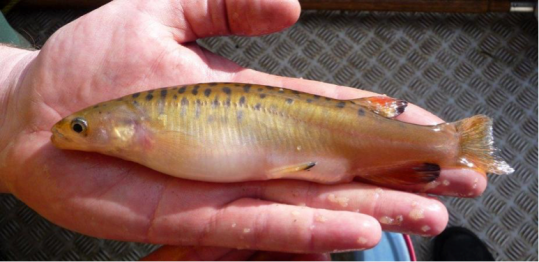Yesterday – along with the Paris Climate Change conference starting and Christmas events and end of school year schedules, I made time to pause for the species we have lost.
Yesterday, November 30th was International Remembrance Day for Lost Species.
It has been phrased the “death of birth” – a term coined by a CEO-maverick-turned-sustainability-champion who once owned the US’s largest carpet company……Ray Andersen (May he rest in peace.)
His company Interface carpets is set to be the first company on earth to produce a zero negative-effect on the environment, a goal likely to be achieved by 2020.
Imagine if every CEO’s heart was moved by the prospect of the “death of birth”- that for hundreds of species there will be no celebration of new life from now into eternity. Such a loss breaks my heart.
The year I was born (1968) was the final year a baby White Lake cave crayfish was ever born in the USA. You can find out what species was lost the year you were born too by clicking here. This species was discovered and deemed extinct all in the same year I arrived on the planet (with 7 living in a single location in Alabama).
The species had a range of <1km square and were exquisitely formed for that environment. So many of our lost species have lived in incredibly intricate and interdependent ecosystems – such that a tiny shift of either human or natural influence could alter their state of being.
With a guilty heart we know though it’s hardly from natural causes.
Feral pigs and logging wiped out the Northern Gastric-brooding Frog in Australia in 1993. Only formally recorded in 1984, this crazy Queenslander, after hatching about 25 young at a time the parents would starve for 30-40 days while they matured in their mouth. At any one time they never strayed more than 4 metres from water. Many lived in the same pools in which they were born.
Imagine being the researcher to have to report back that the species had gone. No more babies. It’s astonishing that a plan was published as early as 1909 highlighting concerns for amphibian species (“National Recovery Plan for Stream Frogs of South-East Queensland”.)

In 1845 these magnificent Paradise Parrots were thought scarce and a campaign launched in 1918 for more research.

Attempts at captive breeding in 1927 were attempted – but by then it was too late. Almost nothing is known about them other than their sweet chicks hatched from pinkish-white eggs. Oh, and that they fed mostly on termites whilst on the ground. It is presumed feral cats wiped them out.
Another species which may have escaped death is the Lake Pedder Galaxias (Tasmania). With no scales but golden skin, large scale hydro-power flooding reduced their home to 2 creeks in 1990 with the last 4 fish found in 1996. Luckily, 11 fish were moved to a different location, survived and 74 eventually returned.

They are still in danger as researchers (who count the fish by snorkelling at night !) haven’t yet found any evidence of reproduction. It has taken 3 Federal level management plans to keep their genetic code in our planetary library.
The Mexicans lost a Grizzly Bear (1964), the Balinese a tiger (1937). I recall shedding tears for the Yangtze River Dolphin in 2002. Did you know Tasmania used to have it’s own emu? Oh, and Aboriginals too (but that’s a whole ‘nother story.)
Some websites listing animal extinction say that there are no recorded extinctions since 2012. Other suggest there is a loss of 3 per hour. I assume the discrepancy is because there is still such an incredible abundance of flora and fauna that we can’t comprehend, and we are still to discover. I can’t recall whether there are hundreds or thousands or even millions more species. Why don’t you find out?
But you might ask – why should I care?
We have such an immature understanding of ecosystems we can never be sure which species might (or might not) be expendable. My empathetic mammalian brain prompts me to suggest none are expendable.
“It’s as though the nations of the world decided to burn their libraries without bothering to see what is in them,” said University of Pennsylvania biologist Daniel Janzen.
Aside from their intrinsic right to exist – there is so much knowledge, so many solutions and even cures to be found from our natural partners.
The idea for velcro was stolen from a hooked seed design, the bullet train modelled from a kingfishers beak. Ingredients derived from plants form about 25% of the pharmaceutical chemicals we use today. There are 3 plant species (in Australia, Panama & Costa Rica) which are likely to hold the key to an AIDS cure. Jellyfish are thought to secrete natural sunscreen compounds.
Spare a thought for all those babies……..those hatchlings, seed pods, fluffy, furry & fragile things.
See below a sad list of our legacy in Australia. The site refers to our national anthem “our land abounds in nature’s gifts, of beauty rich and rare”.
May you poor things be resting in peace somewhere with Ray Andersen.
Lake Pedder Earthworm
Mountain Mist frog
Southern Gastric-brooding Frog
Northern Gastric-brooding Frog
Sharp-snouted Day Frog
Southern Day Frog
King Island Emu
Kangaroo Island Emu
White Gallinule
Paradise Parrot
Norfolk Island Kaka
Lord Howe Gerygone
White-chested White-eye
Robust White-eye
Tasman Starling
Thylacine
Pig-footed Bandicoot
Desert Bandicoot
Lesser Bilby
Desert Bettong
Nullarbor Dwarf Bettong
Desert Rat-kangaroo
Broad-faced Potoroo
Central Hare-wallaby
Eastern Hare-wallaby
Toolache Wallaby
Crescent Nailtail Wallaby
Dusky Flying-fox
Lord Howe Long-eared Bat
Christmas Island Pipistrelle
White-footed Rabbit-rat
Capricorn Rabbit-rat
Lesser Stick-nest Rat
Short-tailed Hopping-mouse
Long-tailed Hopping-mouse
Large-eared Hopping-mouse
Darling Downs Hopping-mouse
Broad-cheeked Hopping-mouse
Long-eared Mouse
Blue-grey Mouse
Gould’s Mouse
Bramble Cay Melomys
Maclear’s Rat
Bulldog Rat